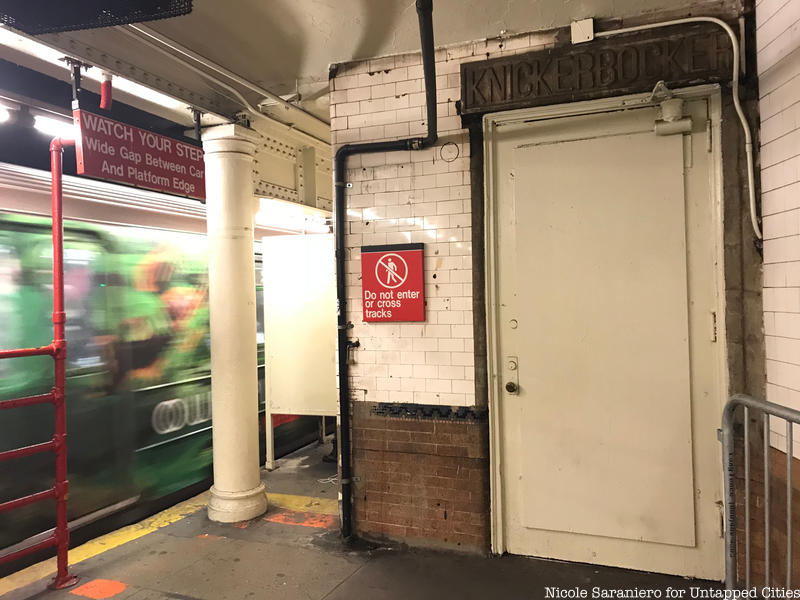2. Knickerbocker Hotel Entrance
From the dawn of the subway system, direct access to was a major perk. Cultural buildings like Clinton Hall, iconic buildings like the Woolworth Building, and department stores like Wanamakers and Loeser’s could boast direct access to stations like Astor Place. When places like these closed or were torn down, doorways and corridors were left untravelled and eventually blocked off. An example of this can also be found inside the Times Square subway station which was once connected to the Knickerbocker Hotel. Again near the shuttle to Grand Central Terminal, at the end of Track 1, you can see a door that once led to the lowest level of the famed hotel’s restaurants and bars. Another similar sign, though losing much of its original splendor, is located at one of the exits close to the Knickerbocker.

The Knickerbocker Hotel opened in 1906 on land owned by John Jacob Astor IV. From the beginning, the lavish hotel was a popular destination, thanks especially to its location in the booming area of Times Square and its subway level entrance which clearly advertised it to downtown IRT riders. The corridor leading from the subway into the hotel, was also decorated with heraldic banners and settees, according to a description from the New York Times in 1906. Inside the tunnel today, which is closed off and used for storage, there are some architectural remnants of the former splendor found in the decaying decorative plasterwork and stenciling on the columns. The original hotel closed in 1920 and for years the Knickerbocker was used as office space. It was reopened as a hotel in 2015 but unfortunately the tunnel did not reopen with it.






